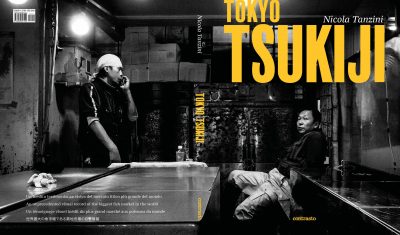by Daniela Mericio
_
A book capable of transporting us into the everyday reality of one of the most famous markets in the world, in the exact moment when the hype calms down, when people and places slip into the suspended dimension that precedes the end of a working day.
The Tsukiji fish market (Tsukiji shijō) in Tokyo was a special place: highly symbolic, loved by tourists, on October 6, 2018 it left its historical site that it had occupied since 1935 and was transferred to Toyosu, in view of the 2020 Olympics.
Nicola Tanzini has collected the soul of this place through black and white photographs, giving an authentic and new vision of it. Images focused on people, fish sellers, their day to day reality, their tools, the physical and mental fatigue of those who work hard for the daily bread. Spontaneous , immediate images, as for the best tradition of street photography, yet balanced, formally ordered, able to isolate a scene in the middle of chaos without too much emphasis.
Two years of work condensed in this book and in an exhibition at the Leica Galerie in Milan (which ended on 4 November 2018), curated by Benedetta Donato. The 140 shots of the book, divided into 8 thematic sections, tell rituals, habits, traditions: the unloading of the goods, the cleaning, the organization, interactions, exhaustion, breaks and relaxation.
Precious images, because they document a place that no longer exists and above all tell of humanly significant aspects with a participating outlook. Tanzini explains: “When I started this work, even though I knew that the fish market would be closed, I did not think about a historical document, but I’m glad that it is taking on this value too.”
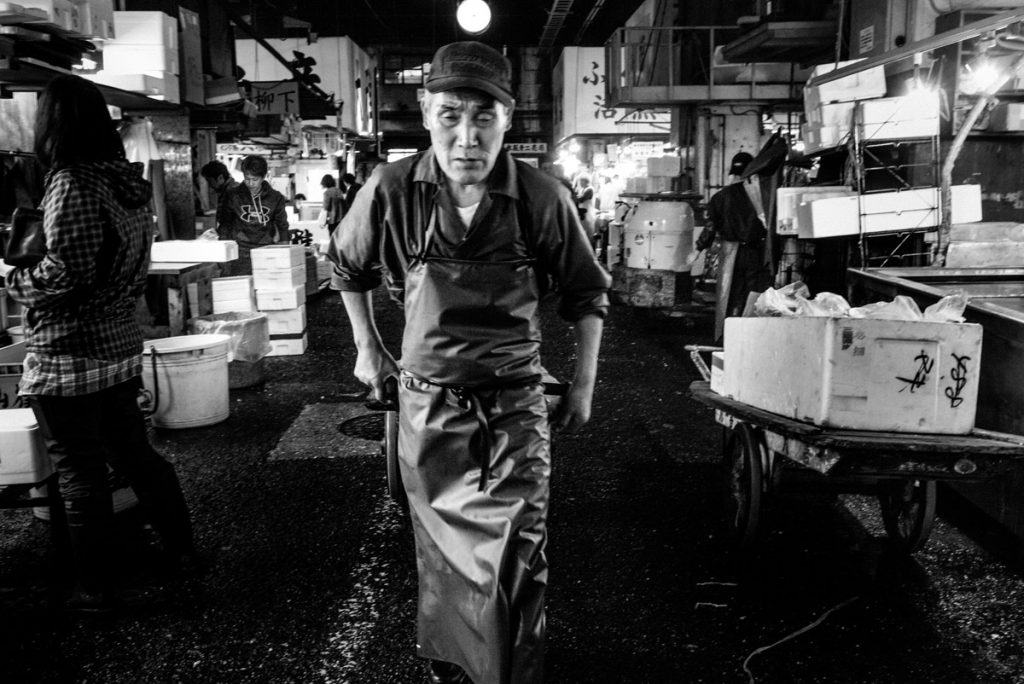
Why Japan, why Tokyo, why a market?
Japan has always been a passion, it is a country that I always wanted to visit and, finally, I had the chance to take a trip to Tokyo, a city that has fascinated me since childhood. A charm based on images, photography, history. One of my reference photographers is Daido Moriyama: seeing Tokyo meant meeting a city that I knew through the images of an author who inspired me and was a guide in my own photography. The fish market was a coincidence, I knew of its existence but I did not think to photograph it, let alone think about creating a project. My visit as a tourist began when the commercial activities were finished. The first time I arrived after 9 and while I was walking in this huge structure I noted the state of mind and the physical posture of a person at the end of a long day: he was resting and smoking a cigarette. It was only 9:30 in the morning, but for him the work started around 11 the night before. The scene struck me and I began to see around me so many people who were relaxing after work. I started to feel the desire to show more about a moment that we all live, regardless the job we have: at the end of our activity we need to dedicate a moment to ourselves, some share it with a friend, others prefer to be alone listening to music, others relax so much they fall asleep. This was the first spark of the work that emerged from Tokyo Tsukiji.
You can say that these photos represent a human type: could you have taken them anywhere? What’s typically Japanese?
There is something profoundly Japanese about this reality, because it looks like a place where modern samurai could live. The fish, especially the tuna, is handled with old samurai swords, beautiful, huge katanas. You can really experience the Japanese culture in this place, there is a cross-section of society. It is a precise context, but I tried to represent something that is not only Japanese, it is universal, a mental and physical state that is experienced in any part of the world.
How do you choose the subjects to be photographed and, more importantly, how do you approach them?
It is a reportage work. Aware of the research I was doing, every morning that I spent in Tsukiji I kept a very natural approach with the people who worked there. I have always approached them outside working hours: I would have been a nuisance, along with thousands of tourists taking pictures. I worked in an anomalous schedule and at a time when I did not disturb them, which made everything easier, perhaps because they were very tired by then. These are not stolen photographs, with the many people photographed there has always been an interaction, at least at a gesture level; they were aware but none of them ever asked for a posed portrait. They are all portrayed doing what you see in the pictures.
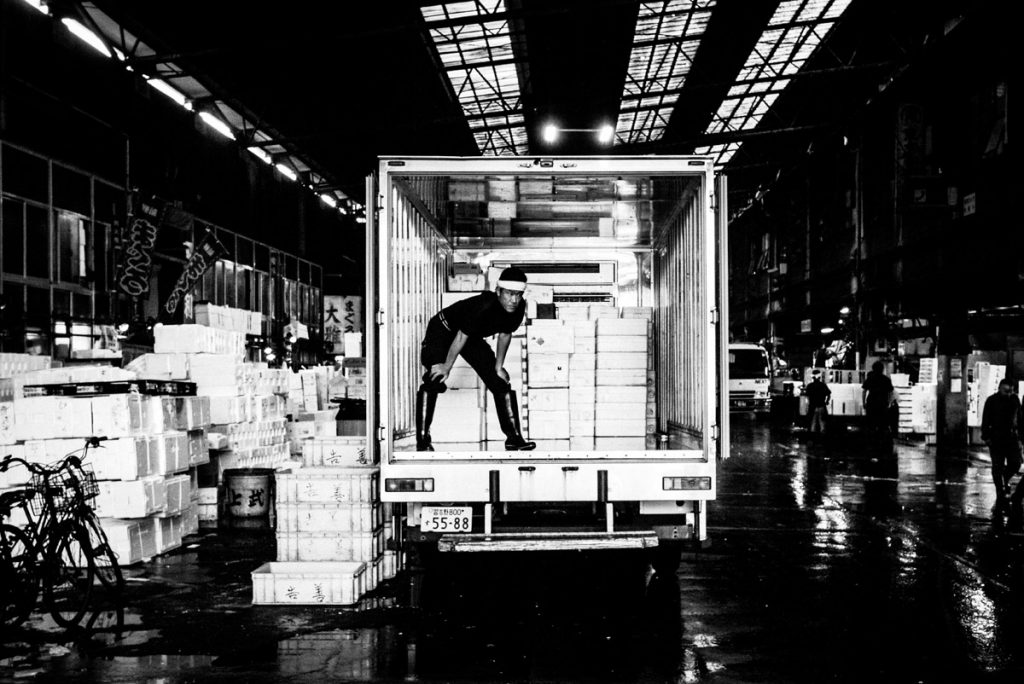
Are you one of those photographers who sees the world in black and white?
Yes. I could say that, for me, black and white has all the necessary colour. I try to concentrate on what interests me, the black and white allows me not to be distracted by the colour. I do not like aesthetics tied to colour or effects. I try to always represent a concept or a state of mind, to portray a person, to try and tell their story, beyond the context, the setting and therefore also colour, in the conventional sense.
How would you define your style? What would you like to convey through your images: emotions, knowledge… ?
I try to catch the moment in the hope of being able to represent it. Photography for me is form and content, I try to build the image according to what I want to develop. The hope is to be able to convey the feelings that led me to take that shot, representing a state of mind, a context in which to place the humanity that interests me.
You said: “through photography I have improved my understanding of human nature” …
I am a humanist. What really attracts me is mankind in all its expressions, even those linked to the objects we use. The cultural aspect, but only from a daily point of view. It is in everyday life that I look for the story of humanity, in simple things, in normality.
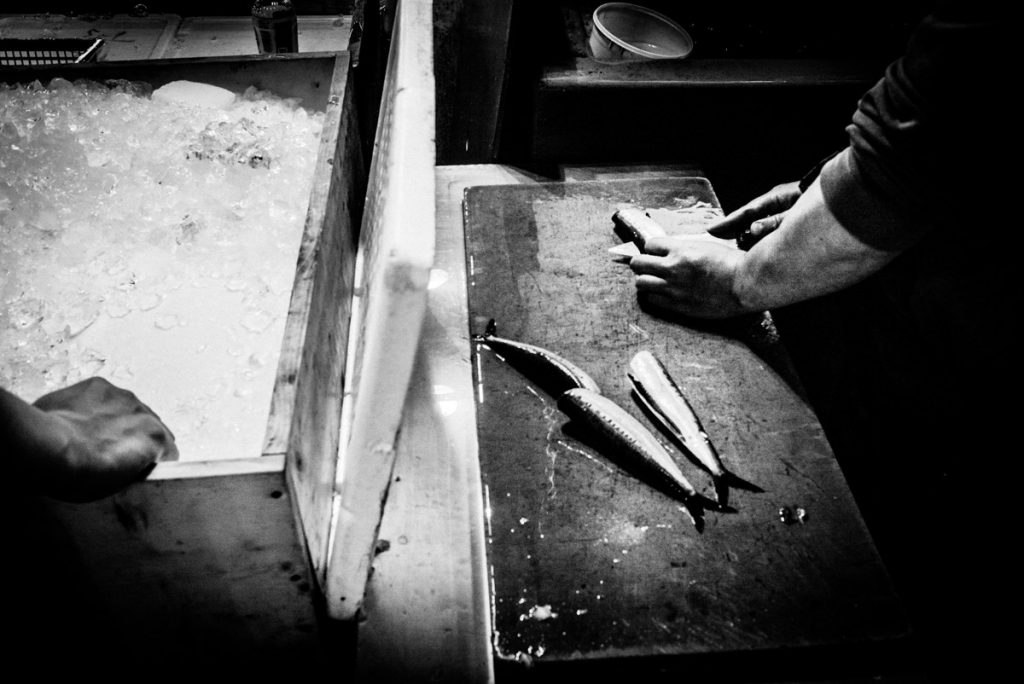
A few words on the equipment: what would you never give up?
For many years I’ve photograph with a Leica: when I used film I chose the M6, today it’s always M cameras. It’s a perceptual question, because it makes me forget to have a camera in my hand. It is an instrument that it’s not intimidating. I work with 35mm. I try to use the context a lot.
Future projects?
They are related to my interests, and it’s currently all work.
I’m working in several big cities all over the world, trying to portray people at the end of their working day. The street is where I like to photograph and where it all began. It is the environment where we live a significant part of the day. It is there that I want to grasp the humans that live in the great metropolis.
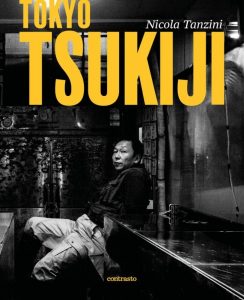
The book:
Nicola Tanzini
Tokyo Tsukiji
curated by Benedetta Donato
Contrasto, 2018
All images: © Nicola Tanzini
October 26, 2018
**Tokyo Tsukiji is also an exhibition, presented at Photolux Festival in Lucca, at Palazzo Ducale, until December 9th, 2018**
